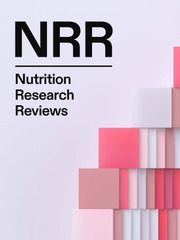Crossref Citations
This article has been cited by the following publications. This list is generated based on data provided by Crossref.
Cooke, K.
and
Gould, M.H.
1991.
The Health Effects of Aluminium — A Review.
Journal of the Royal Society of Health,
Vol. 111,
Issue. 5,
p.
163.
Beattie, John H.
and
Avenell, Alison
1992.
Trace Element Nutrition and Bone Metabolism.
Nutrition Research Reviews,
Vol. 5,
Issue. 1,
p.
167.
Owen, Linda M.W.
Crews, Helen M.
and
Massey, Robert C.
1992.
Aluminium in tea: SEC-ICP-MS speciation studies of infusions and simulated gastrointestinal digests.
Chemical Speciation & Bioavailability,
Vol. 4,
Issue. 3,
p.
89.
Fosmire, Gary J.
Focht, Stephen J.
and
McClearn, Gerald E.
1993.
Genetic influences on tissue deposition of aluminum in mice.
Biological Trace Element Research,
Vol. 37,
Issue. 2-3,
p.
115.
Mei, L.
and
Yao, T.
1993.
Aluminum Contamination of Food from Using Aluminumware.
International Journal of Environmental Analytical Chemistry,
Vol. 50,
Issue. 1,
p.
1.
Owen, L.M.W.
Crews, H.M.
Bishop, N.J.
and
Massey, R.C.
1994.
Aluminium uptake from some foods by guinea pigs and the characterization of aluminium in in vivo intestinal digesta by SEC-ICP-MS.
Food and Chemical Toxicology,
Vol. 32,
Issue. 8,
p.
697.
Fulton, Barbara
and
Jeffery, Elizabeth H.
1994.
Heme oxygenase induction.
Biological Trace Element Research,
Vol. 40,
Issue. 1,
p.
9.
Nabrzyski, Michal
and
Gajewska, Regina
1995.
Aluminium and fluoride in hospital daily diets and in teas.
Zeitschrift f�r Lebensmittel-Untersuchung und -Forschung,
Vol. 201,
Issue. 4,
p.
307.
Testolin, G.
Erba, D.
Ciappellano, S.
and
Bermano, G.
1996.
Influence of organic acids on aluminium absorption and storage in rat tissues.
Food Additives & Contaminants,
Vol. 13,
Issue. 1,
p.
21.
Klein, Gordon L.
and
Snodgrass, Wayne R.
2000.
The Cambridge World History of Food.
p.
1694.
2000.
The Cambridge World History of Food.
p.
1575.
2002.
Metal Contamination of Food.
p.
40.
Kalista-Richards, Marcia
and
Pursell, Robert N.
2008.
Nutrition in Kidney Disease.
p.
305.
Poole, Robert L
Schiff, Linda
Hintz, Susan R
Wong, Allison
Mackenzie, Nicol
and
Kerner, John A
2010.
Aluminum Content of Parenteral Nutrition in Neonates: Measured Versus Calculated Levels.
Journal of Pediatric Gastroenterology & Nutrition,
Vol. 50,
Issue. 2,
p.
208.
Poole, Robert L.
Pieroni, Kevin P.
Gaskari, Shabnam
Dixon, Tessa K.
Park, KT
and
Kerner, John A.
2011.
Aluminum in Pediatric Parenteral Nutrition Products: Measured Versus Labeled Content.
The Journal of Pediatric Pharmacology and Therapeutics,
Vol. 16,
Issue. 2,
p.
92.
Poole, Robert
Pieroni, Kevin
Gaskari, Shabnam
Dixon, Tessa
and
Kerner, John
2012.
Aluminum Exposure in Neonatal Patients Using the Least Contaminated Parenteral Nutrition Solution Products.
Nutrients,
Vol. 4,
Issue. 11,
p.
1566.
Jung, In-Ju
Seo, Young-Mi
and
Jekal, Seung-Joo
2017.
The Protective Effect of Rosmarinic Acid on the Aluminum of Dementia Inducer.
The Korean Journal of Clinical Laboratory Science,
Vol. 49,
Issue. 1,
p.
8.
Klein, Gordon L.
2019.
Aluminum toxicity to bone: A multisystem effect?.
Osteoporosis and Sarcopenia,
Vol. 5,
Issue. 1,
p.
2.



